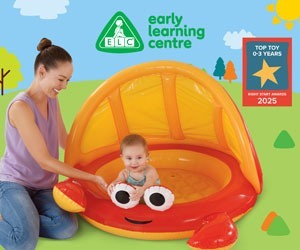Mindful moments
Published
The number of children referred to emergency mental healthcare in England has soared by more than 50 per cent in three years, according to NHW data. With this in mind, childcare experts at Busy Bees have put together a guide, exploring some practical insights and strategies to help you navigate ways of supporting your child’s mental health.

Busy Bees have been supporting parents with children's mental health for over 40 years. They say: ‘Mastering the skill of regulating emotions can pose challenges for children. Every day they are navigating a whole host of new experiences and situations, and learning to respond and interpret these can be overwhelming. In many cases, it can lead to emotional reactions that they haven’t yet learned to understand.’
Be Calm techniques have been designed for parents to use with children to support them in learning how to manage strong feelings and emotions.
Be Calm and breathe focuses on breathing using breathwork and imagination to reduce feelings of worry or anxiety.
One approach is the Beach Breathing technique. Ask children to close their eyes and imagine they are sitting on a warm, sandy beach. While doing so, suggest they breathe deeply through their nose and then out through their mouth, imagining that their breath is the waves rolling onto the shore. You can support what they are imagining by describing what you can see and hear on your own beach.
Be Calm and active focuses on movement, using parts of the body and experiences to re-direct emotions.
The clap it out or stamp it out technique is simple and effective. If they’re feeling strong emotions, encourage children to clap as fast as they can for 10 seconds. When the time is up, put your hands out in front of you and ask them if they can feel their fingers tingling. Or you could ask children to stamp their feet as quickly as they can for 10 seconds and ask them what their feet feel like when they've stopped.
Be Calm and positive focuses on supporting children’s self-esteem. My weather report is a method to encourage children to think about how they are feeling today and liken it to the weather: for example, they might be feeling sunny, stormy, calm or bright.
This technique allows you to explain that even though we can't change the weather, just as we can’t always change how we are feeling, we can make sure we notice it and understand why it’s important. Sharing how we are feeling with others can make us feel better if we are unhappy or worried.
Other ways to support children’s mental health include:
- Listening to their feelings.
- Staying involved in their interests.
- Taking what they say seriously.
- Supporting them through difficulties,
- Encouraging their interests.
- Building positive routines.







